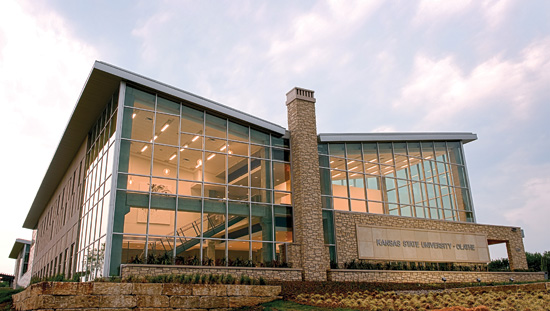Ultimate Daylighting
Eliminating Barriers
Mid-century modernism is often credited for residential designs that open up buildings to the outdoors. These architects followed the inspiration of Mies Van Der Rohe who designed the glass Farnsworth House. The philosophy of Mies Van Der Rohe and his belief that exposure to the natural world, including access to daylight, is part of a higher unity has had a strong influence on American architecture.
“Nature, too, shall live its own life. We must beware not to disrupt it with the color of our houses and interior fittings. Yet, we should attempt to bring nature, houses, and human beings together into a higher unity. If you view nature through the glass walls of the Farnsworth House, it gains a more profound significance than if viewed from outside. That way more is said about nature—it becomes a part of a larger whole.”3 |
California mid-fifties cases study houses provided examples of a lifestyle that allowed a seamless transition between living indoors to living outdoors with main living spaces opening up to the outdoors. In the later part of the last century, architects became more conscious of the environmental impact of these large framed openings. To control heat loss and heat gain while still providing access to daylight, architects began to design homes and businesses with smaller windows to reduce heat gain and heat loss. Today, residential designers are finding that there are fewer design compromises with new window and door systems.
With the advent of new sliding and folding door walls, the interior becomes part of the exterior and vice-versa with new window systems that allow direct access to daylight. With thinner mullions and with engineering that has been tested to meet high performance values, these new door walls are finding a place in residential, commercial, and institutional settings. According to Ximena Rojas, marketing director for Panda Windows & Doors, “Large panel door solutions such as sliding doors and folding doors have been around for a long time, of course, but interest is growing as new technology and innovations are introduced. The result is better, bigger, and slimmer sophisticated doors with architectural bells and whistles. The trend has been popular in warmer states but now it's gaining traction in harsher climates where homeowners are highly motivated to make the most out of their short outdoor season.”
 |
At the Surrender Nightclub at Wynn Hotel and Casino in Las Vegas, the bar is extended into the outdoor pool area for patrons to enjoy a sunny day or warm night. This 20-foot-wide, 15-foot-tall, four-panel lift and slide glass wall system is hidden into a wall pocket when completely opened. Photo courtesy of Panda Windows & Doors |
As a response to New Urbanist principles of connectivity and the redevelopment of Main Street to be more active and lively places, architects are choosing window systems that open up to the street or to the market place. Because of new lift and slide technology, even larger window openings are possible as alternatives for wall facades. Captured door systems with perimeter frames provide better energy performance than that of a frameless or butt jointed panel. Framing and interlocking components control air and water infiltration better than a frameless system with glass joints and air spacers. For exterior applications, window manufacturers recommend aluminum or wood pre-framed, “captured” energy-efficient systems. However, if the window system is specified for an indoor climate-controlled opening, like at a store or restaurant in an enclosed mall, a frameless system might be the best solution.
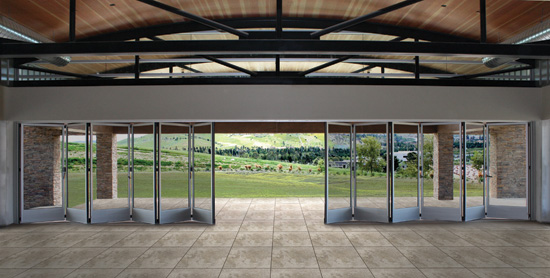 |
The large door at the University of Irvine in California has eight panels with an overall opening of approximately 20 panels—7 feet by 8 feet high. The architect specified this door to meet the maximum impact rating and allowable design pressure criteria. Photo courtesy of Panda Windows & Doors |
Structural Performance
Structural performance is important when specifying large window openings. Larger frames with very long spans are now possible and have been incorporated in projects ranging from residential to commercial.
Architects and engineers specify window and door systems to meet the appropriate design pressure rating (DP) as well as impact ratings. Lift and slide window and door products have the ability to reach a DP rating of 100 percent. Those manufacturers that can achieve this rating in their products exceed Miami-Dade test criteria. Miami-Dade County in Florida is exposed to category four and five hurricane winds. Miami-Dade is the industry standard used in most building codes that set the baseline for DP ratings. Products that exceed the Miami-Dade standards ensure consistent product quality, assure better property and life protection, and comply with uniform codes.
| Windows: Connections and Performance in Kansas | ||
|
The design intent of 360 Architecture for the first building on Kansas State University’s Olathe campus was visibility, connectivity, and a strong sense of place. The architects selected high-performance glazing for the building’s exterior glass. Dave Rezac, principal at 360 Architecture, commented: “The use of glass was deliberate and strategic, as we wanted to produce a transparent envelope that created visual interest looking into the facility while providing daylight and views out of the building.” With a visible light transmission of 68 percent and solar heat gain coefficient of 0.38, these windows provided abundant daylighting along with outstanding solar energy control, which helps reduce electric lighting and HVAC loads, thus contributing to the building’s LEED® Silver certification.
|
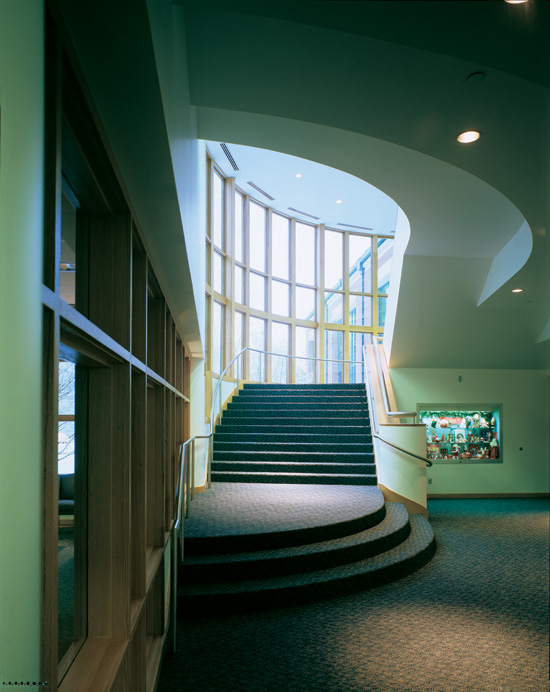 |
Rochester Hills Library, designed by Architects TMP. Energy-efficient, large window expanses encourage patrons to use the stairs and provide connectivity and harvested daylight between floors. Photo courtesy of Pella Commercial |
Notice
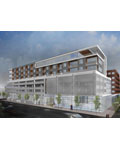
Circle 7
www.sunguardglass.com
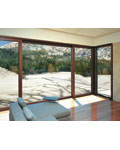
Circle 8
www.panda-windows.com
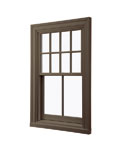
Circle 9
www.pellacommercial.com





